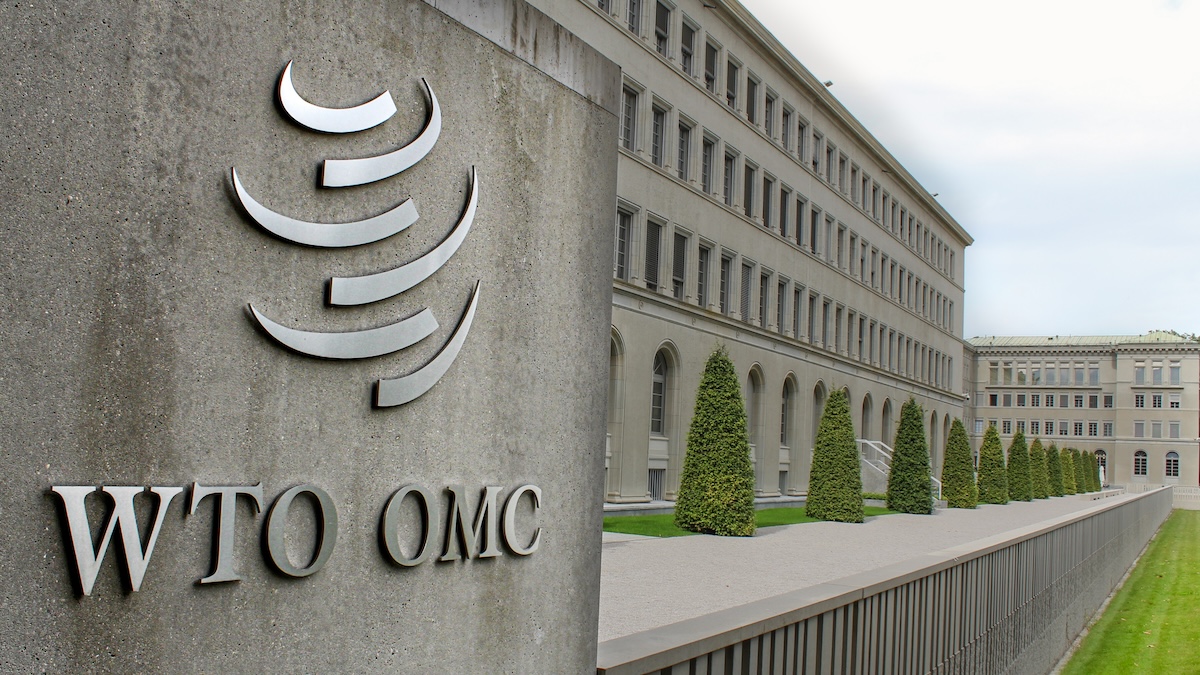
After Trump’s “Liberation Day” tariffs in April, many were surprised by how solid first-quarter earnings turned out for S&P 500 companies.
This resiliency then held up throughout the first half of the year as the most dire warnings about the economy never came to pass.
While Trump’s tariffs have not really caused much of a drag on the markets thus far, a number of economists warned that their impact would not actually be felt until 2026.
And with the repercussions of the tariffs now set to begin winding through the economy, the global goods trade will taper off significantly next year, according to a new report from the World Trade Organization.
One of the reasons that global trade and industrial production proved so resilient during the first half of the year was due to front-loading ahead of higher tariffs kicking in, according to the WTO.
But higher tariffs went into effect in August, leaving the WTO “less optimistic” about the economic prospects for the second half of 2025 and 2026.
“With higher tariffs now in place and trade policy still highly uncertain, frontloading of purchases is expected to unwind as accumulated inventories are drawn down and as GDP growth slows,” the report said.
“Possible signs of weakness in trade and manufacturing output have been observed in developed economies, including reduced business and consumer confidence and slower growth in employment and incomes.”
The WTO is forecasting a sharp drop in global merchandise trade volume, slowing from 2.4% in 2025 to 0.5% in 2026. It was at 2.8% in 2024.
The projected GDP growth is also expected to decline to 2.6% in 2026 from 2.7% in 2025.
In addition to frontloading ahead of the tariffs, the WTO’s report found – unsurprisingly – that AI-related goods were the heavy drivers of growth in the first half of the year, accounting for nearly half of the overall trade expansion, and rising 20% year-on-year in value terms.
The AI-related goods included semiconductors and processors, telecommunications equipment, cloud servers and finished computers. On the other hand, non-AI merchandise accounted for less than 4% of trade growth.
The WTO points out that AI-related goods made up less than a tenth of the world merchandise trade in the first half of the year, making it even more remarkable that they contributed such a lion’s share of overall growth during this period.
Beyond frontloading and AI, the strong growth in the first half of the year was supported by “favorable macroeconomic conditions, as disinflation, supportive fiscal policies and tight labor markets with high demand for workers boosted real incomes and spending in major economies.”
“Trade growth is expected to slow in 2026 as the global economy cools and as the full impact of higher tariffs is finally felt for a full year,” the WTO said.
Countries have gotten creative to evade tariffs
Meanwhile, Michelle Gibley, director of international research at Charles Schwab, said in a report published on Monday that the full impact of Trump’s tariffs on the global economy “has yet to be felt and may not happen for some time—or even at all.”
Gibley noted that one of the ways the economic impact of the tariffs has been diminished is through tariff evasion, including through trade rerouting.
That happens “when goods are sent from China to other Asian countries for minimal processing or repackaging before being exported from those countries to the U.S. to avoid the higher tariff on goods coming from China.”
Schwab has seen evidence of this rerouting by the increased number of imports from China to Cambodia, Thailand, and Vietnam.
Another way countries are mitigating the impact of the tariffs is through underreporting, or underinvoicing, which happens when exporters declare to customs officials a lower value of their goods being shipped to the U.S., which lowers the tariff.
“The U.S. Trade Fraud Task Force launched in August may help increase enforcement of trade laws,” Gibley noted. “However, staffing at the ports would likely need to increase dramatically to visually inspect every container arriving into the U.S.”
But even if the US clamps down on the evasion tactics, the overall impact of Trump’s tariffs might be less than anticipated due to offsetting macroeconomic factors, according to the Schwab report.
“Growth and profits may eventually slow, but the inflation impact is already more gradual than initially expected,” Gibley said.
“We believe tariffs hurt economic growth and cause an increase in prices, but fiscal and monetary stimulus, as well as other secular trends like spending on the artificial intelligence (AI) arms race could offset the impact.”
Your email address will not be published. Required fields are markedmarked